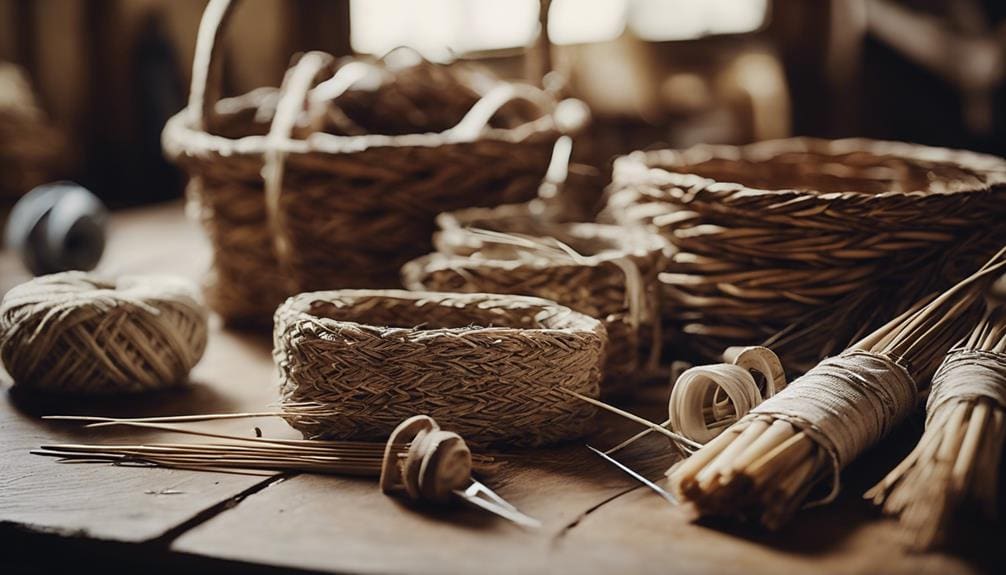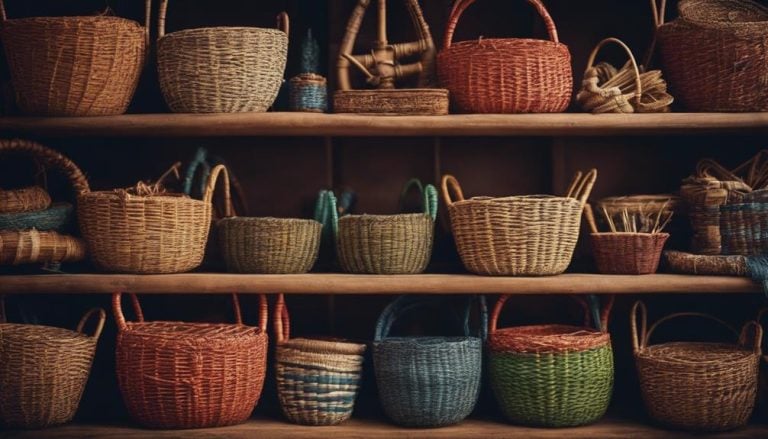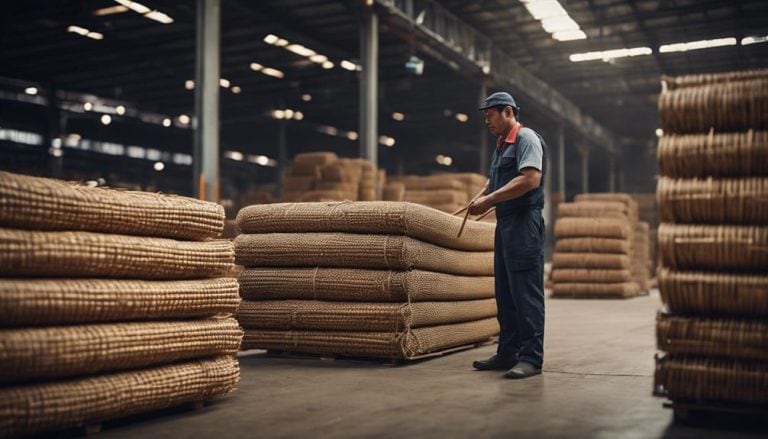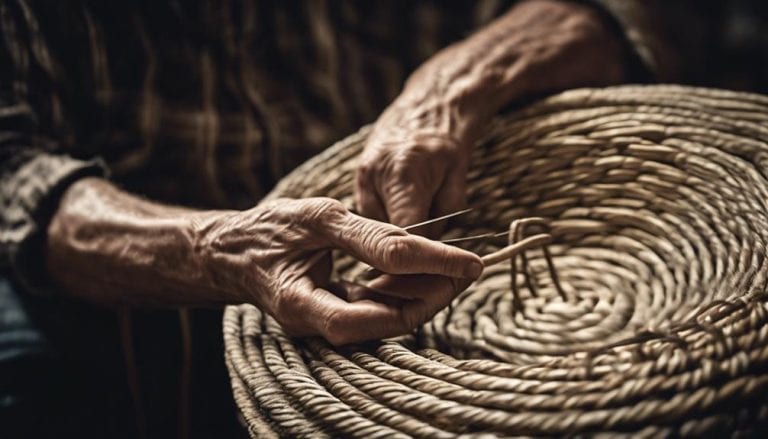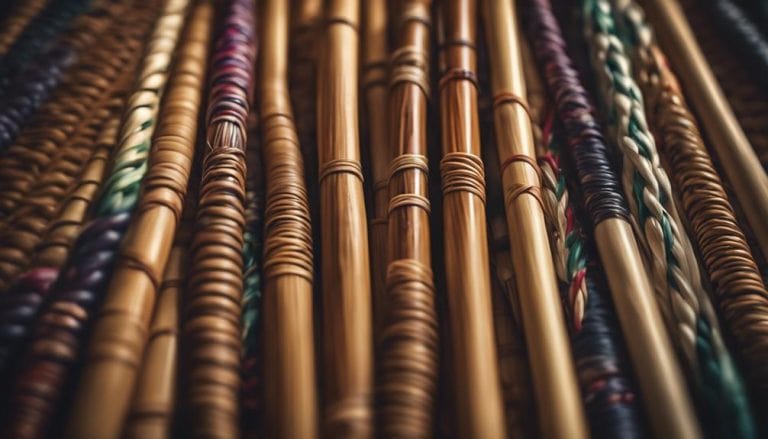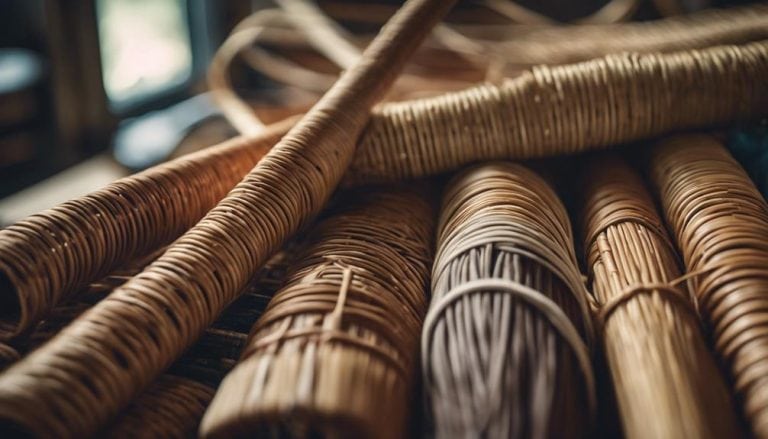How to Choose Basket Weaving Supplies
As the saying goes, “The right tools for the right job,” selecting the appropriate supplies is crucial for basket weaving. When faced with many options, making informed decisions can be daunting.
Understanding the intricacies of each material and tool is essential in creating beautifully crafted baskets. Let’s explore the key factors to consider when navigating the world of basket weaving supplies, ensuring your projects turn out just the way you envision.
To choose basket weaving supplies, consider the type of material you want to use and ensure you have the necessary tools. Research online or visit a local craft store for a wide selection of supplies.
Key Takeaways
- Consider reed varieties like flat, oval-oval, and round reed for different weaving styles.
- Opt for seagrass for its eco-friendliness, versatility, durability, and colors.
- Select materials for handles based on ergonomics, aesthetics, and functionality.
- Explore additional materials like raffia, ash splints, and fiber rush to enhance basket designs.
Types of Basket Weaving Materials
I navigate through materials like reed, cane, willow, rattan, and seagrass to achieve the desired weaving techniques and designs when choosing basket weaving supplies. Each material offers unique color options and texture variations, allowing me to add depth and character to my creations.
Cost considerations and durability factors play a crucial role in my decision-making process. Willow and bamboo provide a natural and rustic look to my baskets, while rattan, often mistaken for reed, offers a similar appearance with added flexibility. Understanding the properties of each material helps me select the right one for the project at hand.
By considering factors like strength, pliability, and colorfastness, I ensure that my baskets look beautiful and stand the test of time. Experimenting with different materials has broadened my creativity and enhanced the quality of my woven pieces.
Popular Reed Types for Weaving

Reed types commonly used in basket weaving offer a variety of shapes and textures to enhance the artistic appeal of woven creations. Flat reed, with its smooth, flat surfaces ranging from 1/16 to 1/8 inch thick, provides an ideal base for weaving intricate patterns.
Round reed, available in various diameters, adds versatility to basket weaving projects, allowing for exploring different techniques. A half-round reed featuring a rounded and flat side introduces a unique texture to woven patterns, creating visual interest in the final piece.
Oval-oval reed, rounded on both sides, is perfect for crafting organic shapes and adding a touch of elegance to baskets. Understanding these reed textures is essential for selecting the right type based on the weaving techniques and design elements desired for each basket project.
Reed Sizes and Varieties

Exploring the diverse sizes and varieties of reeds available for basket weaving reveals a world of creative possibilities for crafting unique and intricate designs. When selecting a reed for your project, it’s essential to consider factors like reed flexibility and thickness and how they contribute to different weaving techniques and patterns.
Here is a breakdown of common reed types used in basket weaving:
| Reed Type | Description | Best Use |
|---|---|---|
| Flat Reed | Flat on both sides, 1/16 to 1/8 inch thick, offers diverse weaving options | Creating intricate patterns |
| Oval-Oval Reed | Rounded on both sides, provides a unique texture for basket designs | Adding depth and dimension to the weave |
| Round Reed | Cylindrical with varying diameters, versatile for various basket projects | Ideal for creating curves and round shapes |
Understanding the characteristics of each reed type can help you choose the right one based on your weaving preferences and the design you aim to achieve. Experimenting with different reed sizes and varieties opens up a world of creativity in basket weaving, allowing you to craft pieces that truly stand out.
Utilizing Seagrass in Weaving
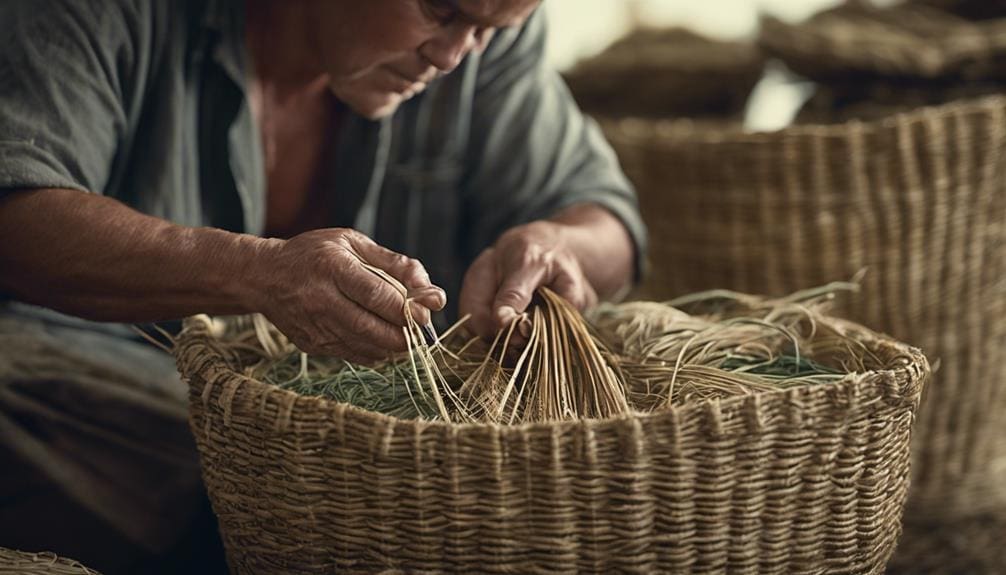
Incorporating seagrass into basket weaving enhances the craft’s eco-friendly and versatile aspects and adds unique texture and durability to the final woven products. Seagrass is popular for weavers due to its natural properties and flexibility. It offers a smooth texture that is easy to work with, making it suitable for beginners and experienced artisans.
Harvested from marshy coastal areas, seagrass is renowned for its strength, ensuring that the baskets created are durable and long-lasting. One of the advantages of seagrass is the variety of colors available, allowing for creative customization and blending with other weaving materials.
Weaving with seagrass can result in stunning, sustainable baskets perfect for home decor or as thoughtful gifts. Experimenting with different weaving techniques can bring out the best in seagrass, showcasing its unique qualities and enhancing the beauty of the final woven pieces.
Additional Basket Weaving Materials
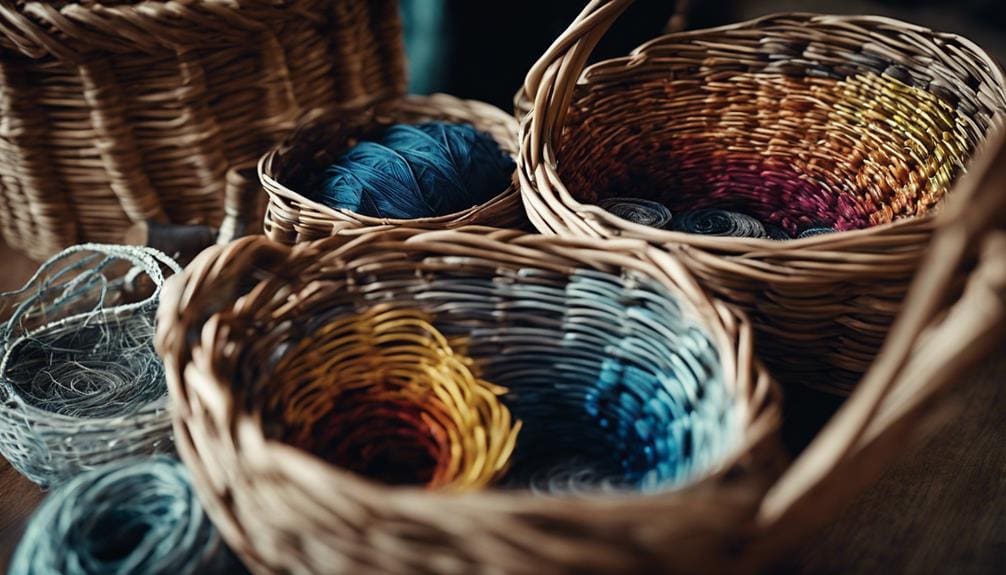
Diversifying basket weaving materials opens up a world of creative possibilities, with each material offering unique textures, vibrant colors, and natural appeal to enhance the aesthetic of woven baskets. Seagrass, known for its smooth finish, adds a touch of elegance to the weave, creating baskets that exude sophistication.
On the other hand, Raffia brings a rustic charm, perfect for those seeking a more natural look in their creations. With their durability and strength, Ash splints provide a sturdy foundation for weaving intricate patterns and designs.
Fiber rush, a versatile and easy-to-work-with material, offers a wide range of creative weaving options, making it a popular choice for traditional and contemporary basket projects. By incorporating these additional materials into your basket weaving supplies, you expand your design possibilities and infuse your creations with a unique character that sets them apart.
Exploring Basket Handles
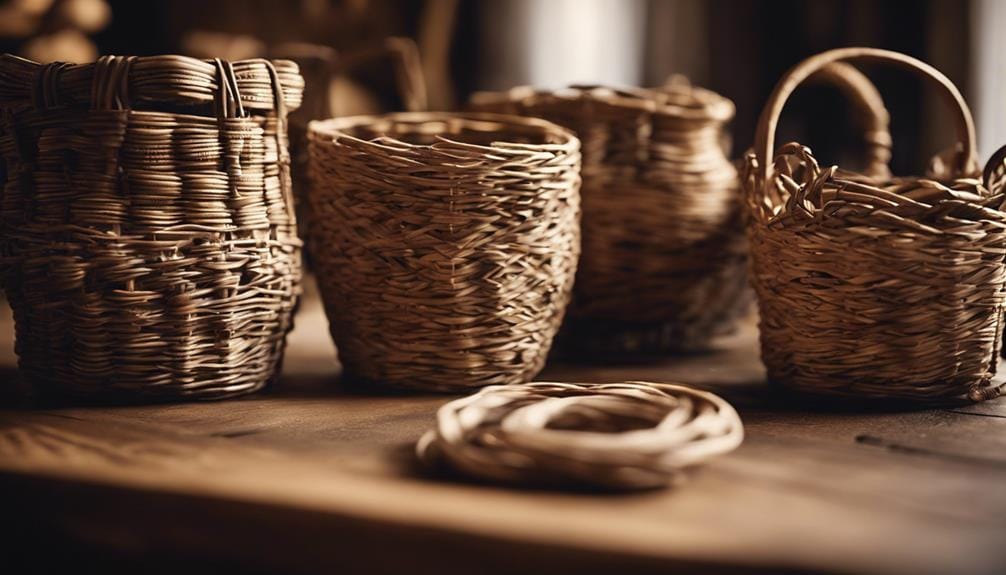
When considering basket handles for your project, the choice of material and style plays a crucial role in both the aesthetics and functionality of the final woven piece. Here are some key considerations to keep in mind:
- Handle materials: Explore options like wood, rattan, bamboo, and twisted vines for a natural and rustic feel.
- Customization: Add personalized touches like carving or painting to make your basket handles unique.
- Handle ergonomics: Consider comfortable handles, especially if you carry the basket for extended periods.
- Aesthetics: Choose handles that complement the overall design of your basket, whether you prefer a traditional or modern look.
- Functionality: Ensure the handle style you choose, whether fixed, swing, or ear handles, aligns with how you intend to use the basket.
What Are the Best Basket Weaving Supplies, Including Danish Cord?
The best supplies for quality Danish cord basket weaving include a sturdy basket weaving frame, sharp scissors, and a variety of high-quality Danish cord. Look for supplies made from durable materials that will hold up to regular use and provide a beautiful finished product.
Sourcing Basket Weaving Supplies
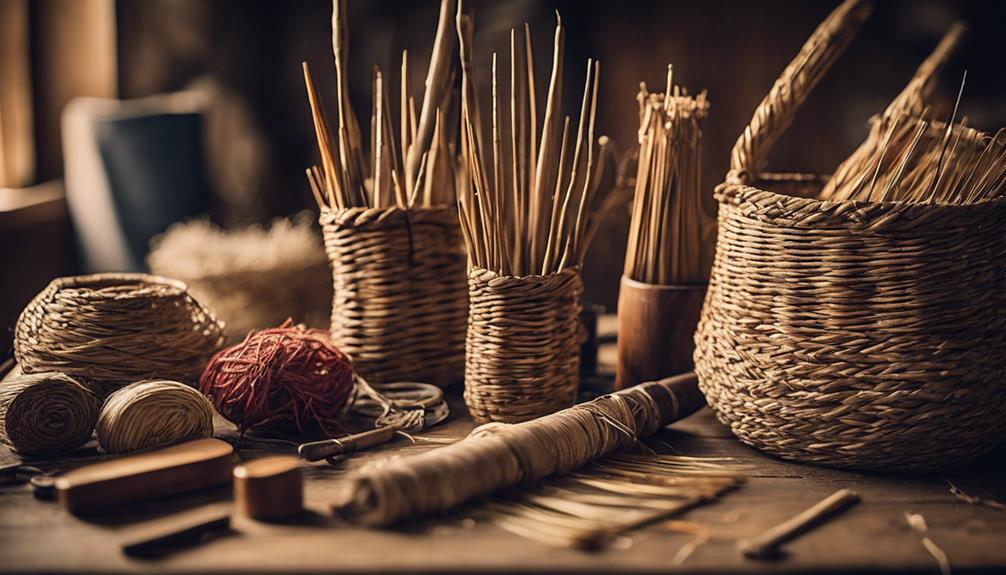
For those venturing into basket weaving, finding high-quality supplies is essential to creating beautiful, sturdy woven pieces. There are various avenues to explore for sourcing basket weaving supplies. Specialty stores, both physical and online, offer a wide range of materials such as reed, cane, willow, seagrass, and tools tailored to basket weaving needs.
These stores often provide kits for different skill levels, from beginners to advanced weavers, making it easier to start your weaving journey. Online options are particularly convenient, allowing weavers to compare prices and quality across different suppliers before purchasing. This can help you find the best deals and get top-notch project materials.
Additionally, don’t overlook local weaving guilds or workshops as valuable resources. They can offer unique or locally sourced materials not found elsewhere and opportunities to connect with experienced weavers for advice and guidance. By exploring these sourcing tips and local resources, you can set yourself up for success in your basket-weaving endeavors.
Frequently Asked Questions
What Is the Best Material for Basket Weaving?
Natural fibers like willow and rattan offer traditional charm and durability for basket weaving. Synthetic fibers provide modern alternatives with vibrant colors and textures. Choosing between them relies on personal preference, weaving style, and project needs.
What Is the Most Popular Material in Basket Weaving?
Natural fibers like rattan, willow, and bamboo are popular in basket weaving. Traditional materials offer authenticity, while modern synthetics provide durability. I prefer the flexibility of rattan-style reed for its availability and versatility in crafting beautiful baskets.
What Is the Best Wood for Basket Weaving?
When considering wood selection for basket weaving, I prioritize white oak for its durability and resistance to moisture, ideal for outdoor baskets. It enhances weaving patterns and allows for diverse basket shapes, adding functionality and aesthetics to my designs.
What Are the 4 Techniques of Basket Weaving?
I love basket weaving. Twining vs. coiling involves twisting strands around a core while plaiting vs. wicker uses checkerboard patterns with flexible materials like the willow. Understanding these techniques is key to mastering intricate designs.
Conclusion
After exploring the different types of basket weaving materials and supplies, it is clear that the key to a successful project lies in choosing the right materials for your design. You can create beautiful and functional baskets that meet your needs by considering durability, flexibility, and color options. So, next time you embark on a weaving project, select your supplies carefully to ensure a satisfying outcome. Happy weaving!

